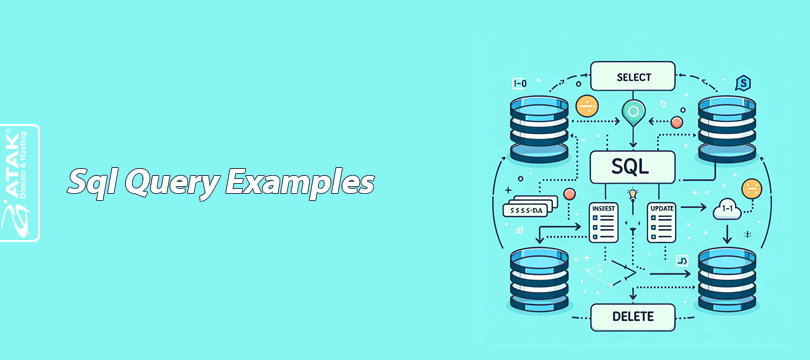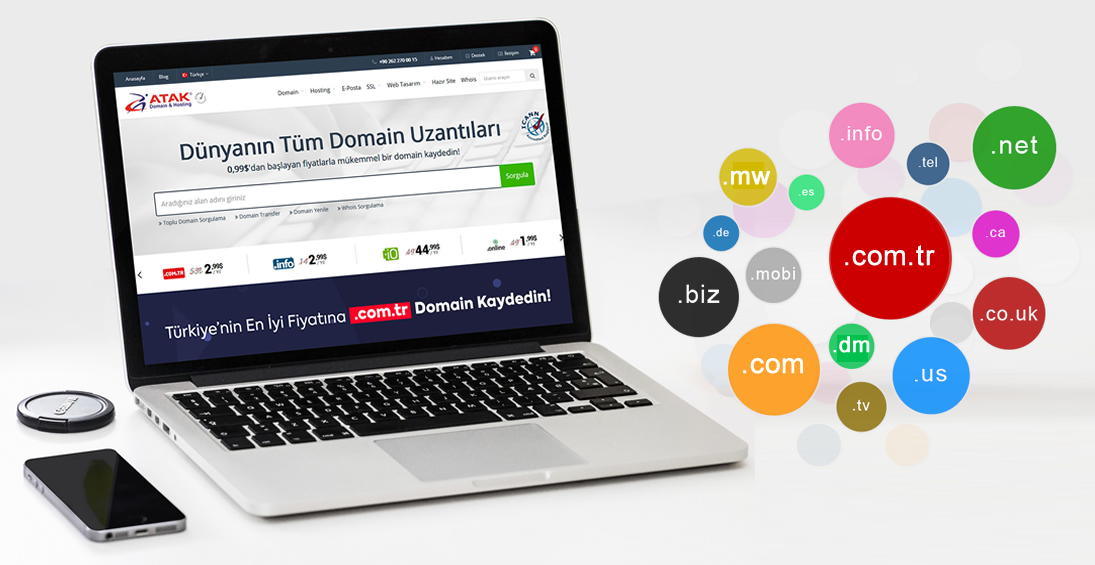

What is a Domain Name Extension?
Before the early 1980s, in order to visit a host on a network, the user would be required to type an IP address, which is a numeric string of code made up of numbers and periods. Computers on this early network were able to communicate and locate each other using these digital Internet Protocol (IP) addresses.
Since there were not many computers on the Internet at the time, this system was manageable. However, it was neither easy nor effective because you needed a way to track every single IP address in the network. If you do not have an IP address, there is no way to visit or communicate with the requested website. An early internet user couldn't query a site, or browse the web like we do today, I was rather restricted by sites that you already knew how to identify.
Basically, it was the equivalent of having a map of a foreign country, but that map only included directions to a few cities. This is limited as you can go and make exploration outside the context of certain directions impossible. Fortunately, the computer scientists from the Internet engineering team came together and decided to simplify the system.
These internet pioneers created what we now know as the Website Domain Name System (DNS), which is the domain registration system that allows complex numeric IP addresses to associate themselves with a specific domain name. So, instead of having to remember a difficult sequence of numbers, which seemed similar to nearly every other IP, such as 75.839.021.73, a person would only have to remember the URL: Reddit.com.
In conjunction with this new domain name system, the earliest forms of domain extensions, also known as Top Level Domains (TLDs) were created in an effort to classify domain names into groups. You will recognize it as the ultimate aspect of websites, like .com, .net, .org, etc. When first created, each extension served a specific purpose and indicated the site's functionality. While this is still true to an extent, the system is no longer rigid. These domain name extensions are quickly becoming an essential part of any domain name. For this reason, we will dive into what domain name extensions are and their purpose and provide you tips on choosing an extension for your website.
Atakdomain.com has over 300 domain extensions to choose from to help set your website apart from the rest. It all starts with great scope.
Original domain name extensions
In January 1985, the Association of Computer Scholars responsible for this Internet classification, known as the Internet Assigned Numbers Authority (IANA), created the first six top-level domains: .com, .net. , .Edu, .mil,. .gov and .org. Soon after, the first two-character country code domain extensions such as .ca or .us were created. As a result, .int has also been added and a list of the seven top-level domain names has been assigned.
.com
dot-com is the abbreviation for commercials. Dot-coms is by far the most used extension and was originally intended for registered domains of business organizations. In total, there were five dot com companies registered in 1985, and they were:
1. Symbolics.com - March 15, 1985
2. BBN.com - April 24, 1985
3. Thnk.com - May 24, 1985
4. MCC.com - July 11, 1985
5. DEC.com - September 30, 1985
By 1987, there were 100 domains registered as dot-coms. This extension was first managed by the United States Department of Defense, which quickly subcontracted the field protection with SRI International. By the early 1990s, the National Science Foundation took over the maintenance job. They subcontracted with Network Solutions (NSI) and authorized them to begin charging dot-com registrars an annual fee of $ 50, of which $ 15 goes to the United States government and $ 35 to NSI. Registrars were required to pay for two years, making the registration fee of $ 100.
By the mid-1990s, despite the creation of dot-com for commercial entities, there were no restrictions on who could register these extensions. With the spread and popularization of the Internet, atakdomain.com became open to the public and quickly grew to become the most popular top-level domain for networks, businesses, websites, and emails.
.edu
The dot-edu domain extension was first created for educational institutions around the world, but while US educational institutions have adapted .edu, non-US educational institutions have used a nationwide domain instead.
The first five .edu TLDs were registered on April 24 of 1985. They were:
1. University of California Berkeley – Berkeley.edu
2. Carnegie Mellon University – Cmu.edu
3. Purdue University – Purdue.edu
4. Rice University – Rice.edu
5. University of California, Los Angeles – UCLA.edu
In 1993, registration to a .edu was limited to four-year post-secondary educational institutions. This was made even stricter in 2001, restricting .edu registration to accredited American post-secondary educational institutions.
.net
The dot-net domain extension is derived from the word network. Originally, it was intended for organizations that have been involved in network technologies such as infrastructure companies and Internet service providers. In 1985, only one domain was registered with the dot-net extension, which is NORDUnet which is similar to Nordu.net. This was created to link education networks in the Nordic countries with national research for the purpose of exchanging informational and exploratory work within the network and around the world.
While dot-net was created for networking purposes, these restrictions were not enforced, and this additional extension became a "general purpose namespace". Today, it is still widely used in the advertising sector and by network operators and is seen by many as a viable alternative to dot-coms.
.gov
The name dot-gov is derived from the word "government," which means that it is restricted to US government agencies. Since the Internet began as a research network sponsored by the US federal government, they have restricted government ratings to US federal government agencies only.
Agencies below Cabinet level needed to use parent agency subdomains. Over time, dot-gov has become a standard protocol for any government departments, agencies, programs, federally recognized tribes, U.S. territories, cities, towns, counties, and parishes. If other countries want to use .gov or something similar, they must use a second-level domain. For example, the United Kingdom is registered as gov.uk
.mil
The name dot-mil is derived from Military. As with .gov, dot-mil is a domain name extension that is limited to the United States military branches. The Department of Defense (DoD) uses dot-gov as its home page and then employs three Tier 2 domains within the dot-mil extension for DOD, Pentagon and Defense. Other countries should use second-level domains as well. Canada, for example, uses norad.mil to jointly operate North American Aerospace Defense Command.
.org
The name dot-org is derived from the word organization and was initially intended for non-profit organizations. However, this restriction was not strictly enforced and was eventually lifted. In July of 1985, Miter became the first group to register dot-org with mitre.org. The domain was originally intended for non-profit entities, but this restriction was not enforced and has been removed. Currently, the domain is open and regularly used by open source projects, communities, for-profit entities, and schools.
ICANN
- The seven top-level domains have been the only options for extensions for nearly thirteen years. The Internet Corporation for Assigned Names and Numbers was not established until September 1998 to manage the allocation and classification of domain names for websites. By the year 2000, ICANN announced to the world that it would offer seven newly available top-level domains: .name, .aero, .biz, .coop, .info, .museum, and .pro. In order to further define the difference between the top-level extensions, ICANN has determined that each top-level domain has a different registry, managed by a group that is monitored by ICANN.
- The extensions can be further separated by generic top-level domains, country-code top-level domains, and infrastructure top-level domains.
- Generic top-level domains
- Generic top-level domains are the most commonly used extensions. Generic top-level domains are also divided into three categories, restricted, unrestricted, and sponsored.
- Restricted - These top-level domains are restricted to accredited professionals, businesses, or individuals. They include .biz, .name,. pro.
- Unrestricted - Unrestricted top-level domains can be purchased by anyone and as the name suggests carry no restrictions on who or what they may register. The most common TLDs are .com, .net. org and. info.
- Sponsored - TLD specialist, has a sponsor that oversees the community the extension represents. These societies generally depend on professional, artistic, ethnic, or geographic formation. The most popular TLDs are .aero, .asia, .cat, .edu, .gov, .int, .jobs, .mil, .mobil, .museum, .tel, and .travel.
Country code top-level domains
- These extensions are intended for sovereign states or dependent countries or territories. CcTLDs consist of two characters and will look like .ca (Canada), .uk (Great Britain), .fr (France). They have little significance for most individuals trying to determine the appropriate extension for their business.
- Top-level domain for infrastructure
- This field was originally restricted to the Advanced Research Projects Agency (ARPA) and was used primarily for technical infrastructure reasons. It was the original domain installed in the Domain Name System and was initially supposed to be just a short-term domain. Over time, the abbreviation changed to the address and the routing parameter area.
- Reasons to consider using a new domain extension
- Today there are hundreds of public extensions available. With millions and millions of websites already in operation, it can be very difficult to get a domain name extension that is applicable, relevant, and beneficial to your business's future success. There are a variety of reasons why it may be wise to use a newer generic domain extension.
- Availability - Odds are, there's a very good chance your company name plus dot-com is already taken, especially if you want to use a generic name like deliciousbakedgoods.com. In order to access this dotcom, you may have to write the company name incorrectly, leave the letters, or make various modifications that do not necessarily help in building your brand. The new domain extensions give you the option to keep your company name and use an extension that applies to the business. Writers can use dot-press, photographers can use bitmap photography, and tech companies can use dot-tech.
- Price - Even when they are unlikely to be available, dot com domains can cost thousands of dollars if not hundreds of thousands of dollars. That same name, or even the most applicable names, without dot-com, can cost much less. The slightly related dot-com purchase might not be worth getting a more relevant name ending with a new domain extension.
- Smart naming - New domain extensions allow companies to intelligently combine the name with the extension. For example, Musical.ly, an American video social network app for video creation and live broadcasting, was able to use the extension in a viable and easy-to-remember way.
- Google Algorithm - Google's search engine algorithm does not penalize websites for not using the generic top-level domain. They treat new gTLDs in a similar way to the original gTLDs.
- Overcoming impulsivity - Because new domain extensions is still a fairly early concept and practice, there are still very popular names or ideas out there that will never be available for dot-coms. However, the popularization of new domain extensions has resulted in increased demand that is only expected to continue to grow. Taking over the perfect new gTLD can save you money and prevent other competitors from disrupting it. The price of buying a domain name from another owner is much more expensive than just registering a new available domain name.
- Great for local businesses - If you have a local business and want to link to this site, you can help build your local brand and image by claiming a new extension. For example, biketours.la might be the perfect name for a bike rental company based in Los Angeles.
- Choose the right domain extension for your business
- There are several things to consider when choosing the correct domain name. A thorough understanding of domain name extensions can help make this process infinitely better.
Categories
- Domain Guide & Registration Process
- Email Services & Setup Instructions
- Step-by-Step How-To Guides
- Insights & Articles from the Tech World
- Server Management & Performance Tips
- Software Development & Coding Resources
- SSL Certificate Guide for Secure Websites
- Choosing the Best Hosting & Optimization Tips
- Key IT Terms & Their Definitions
- SQL Database Management & Queries
- WordPress Setup & Optimization Strategies








